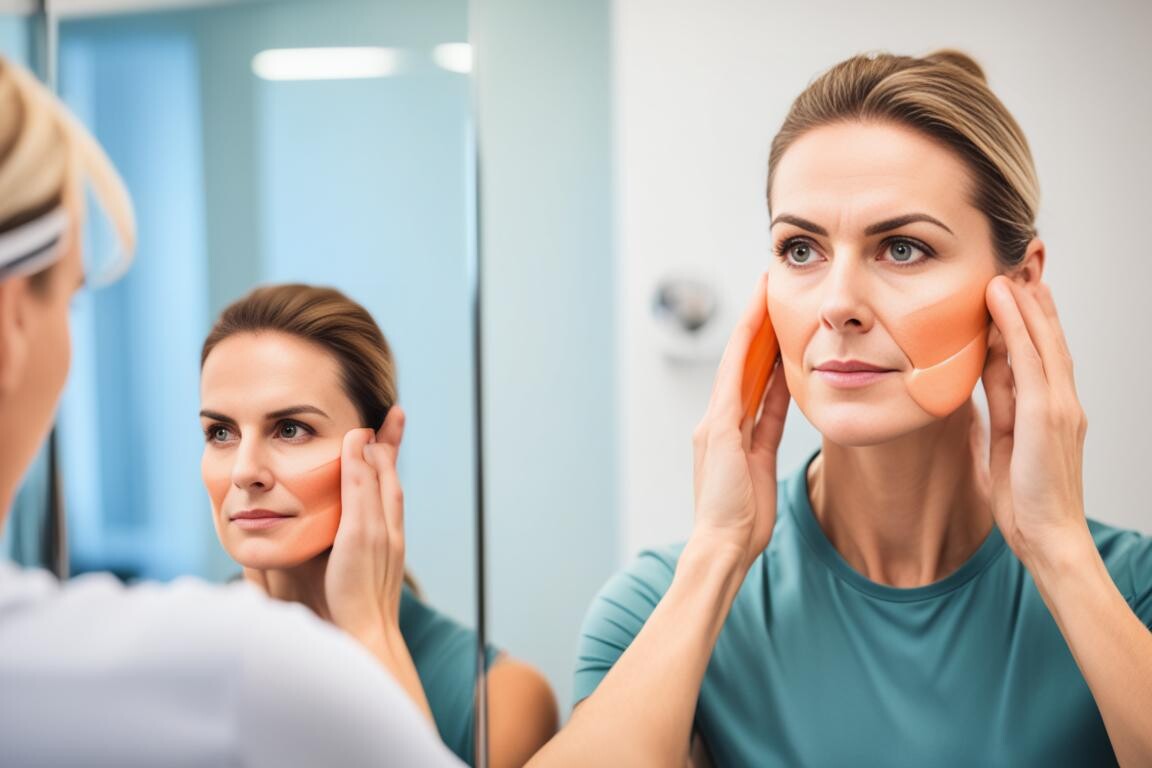Bell’s palsy is a condition that can cause sudden paralysis of the facial muscles, resulting in facial drooping and difficulty in speaking or eating. If you or someone you know is experiencing these symptoms, it’s important to understand the available treatment options that can aid in recovery.
While there is no specific cure for Bell’s palsy, there are effective treatment options that can help alleviate symptoms and speed up the recovery process. These treatments aim to reduce inflammation and restore normal nerve function in the affected area. Here are some of the treatment options commonly recommended by healthcare providers:
Key Takeaways:
- Corticosteroids, such as prednisone, can help reduce inflammation and are often prescribed as a first-line treatment for Bell’s palsy.
- Physical therapy exercises can help prevent muscle atrophy and improve facial muscle strength.
- Protecting and caring for the affected eye is crucial to prevent complications, such as dryness and corneal damage.
- Alternative treatments like acupuncture, biofeedback training, and botulinum toxin injections may provide additional relief for some individuals.
- Consulting with a healthcare provider is essential to determine the most appropriate treatment approach for individual situations.
Table of Contents
ToggleDiagnosis of Bell’s Palsy
When you experience sudden facial paralysis, diagnosing Bell’s palsy requires a thorough examination of your face and an assessment of the movement of your facial muscles. Healthcare providers may also recommend specific tests to confirm the presence and severity of nerve damage and rule out other potential causes.
Physical Examination and Muscle Assessment
During the physical examination, your healthcare provider will examine your face for any signs of paralysis and evaluate the movement of your facial muscles. This assessment helps determine the extent and location of the nerve damage, which is crucial for diagnosing Bell’s palsy.
Electromyography (EMG)
Electromyography, commonly known as EMG, is a test that measures the electrical activity of your muscles. By inserting fine needles into specific facial muscles, the healthcare provider can evaluate the response of the facial nerve. This test helps confirm the presence and severity of nerve damage, supporting the diagnosis of Bell’s palsy.
Imaging Scans
In some cases, imaging scans such as magnetic resonance imaging (MRI) or computed tomography (CT) scans may be recommended. These scans help rule out other potential causes of facial nerve pressure, such as tumors or structural abnormalities.
Oftentimes, blood tests may also be conducted to rule out infections that could be causing your symptoms.
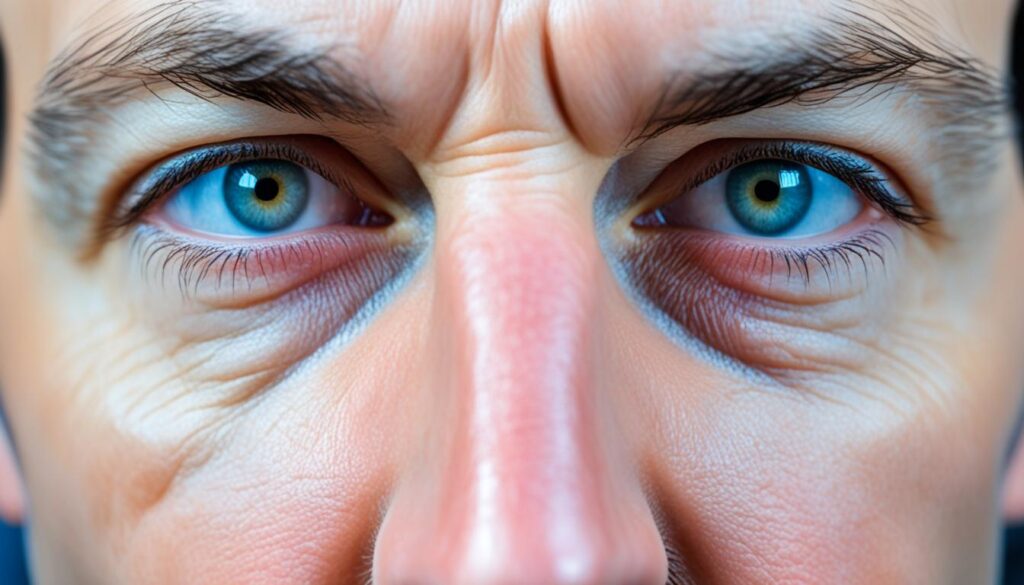
Treatment Options for Bell’s Palsy
The treatment of Bell’s palsy aims to help speed up recovery and alleviate symptoms. There are several treatment options available, including medications, physical therapy, and rarely, surgery. The choice of treatment depends on the severity of the condition and individual needs.
Medications: Corticosteroids, such as prednisone, are commonly prescribed to reduce inflammation and swelling of the facial nerve. These medications may be most effective when started within a few days of symptom onset. In some cases, antiviral drugs may be added to steroids to target viral infections that can cause Bell’s palsy.
Physical therapy: Physical therapy plays a crucial role in the management of Bell’s palsy. It helps prevent muscle atrophy and shortening, improves facial muscle strength, and enhances overall facial movement. A physical therapist can guide individuals through targeted exercises and techniques to promote facial muscle recovery.
Surgery: Surgery is rarely considered for Bell’s palsy and is typically reserved for severe cases where other treatment options have not been effective. The most common surgical procedure is called facial nerve decompression, where the facial nerve is relieved of pressure or compression. It is important to note that surgery carries risks and should only be considered after careful evaluation with a healthcare professional.
It is essential to consult with a healthcare provider to determine the most suitable treatment options for your specific condition. The choice of treatment may vary depending on various factors such as the severity of symptoms, underlying health conditions, and individual preferences.
| Treatment Options | Description |
|---|---|
| Medications | Corticosteroids (such as prednisone) to reduce inflammation and swelling. Antiviral drugs may be used in certain cases. |
| Physical Therapy | Targeted exercises and techniques to improve facial muscle strength, prevent muscle atrophy, and enhance overall facial movement. |
| Surgery | Rarely considered, reserved for severe cases where other treatments have not been effective. Facial nerve decompression may be performed to relieve pressure on the facial nerve. |
Protecting and Caring for the Eye
Bell’s palsy can cause the eye on the affected side to remain open and dry, which can lead to complications. It is crucial to prioritize eye care in Bell’s palsy to prevent potential issues and promote recovery.
Here are some essential tips for protecting and caring for your eye during Bell’s palsy:
- Use lubricating eye drops throughout the day to keep the eye moisturized and reduce dryness. This will help prevent discomfort and potential damage.
- Apply an eye ointment at night before bed to provide overnight protection and prevent excessive dryness during sleep.
- Wear glasses or goggles to shield the eye from external factors such as dust, wind, or bright light. This will minimize irritation and potential injury.
- During sleep, use an eye patch to ensure the eye remains closed and protected. This will help prevent dryness and potential corneal abrasions.
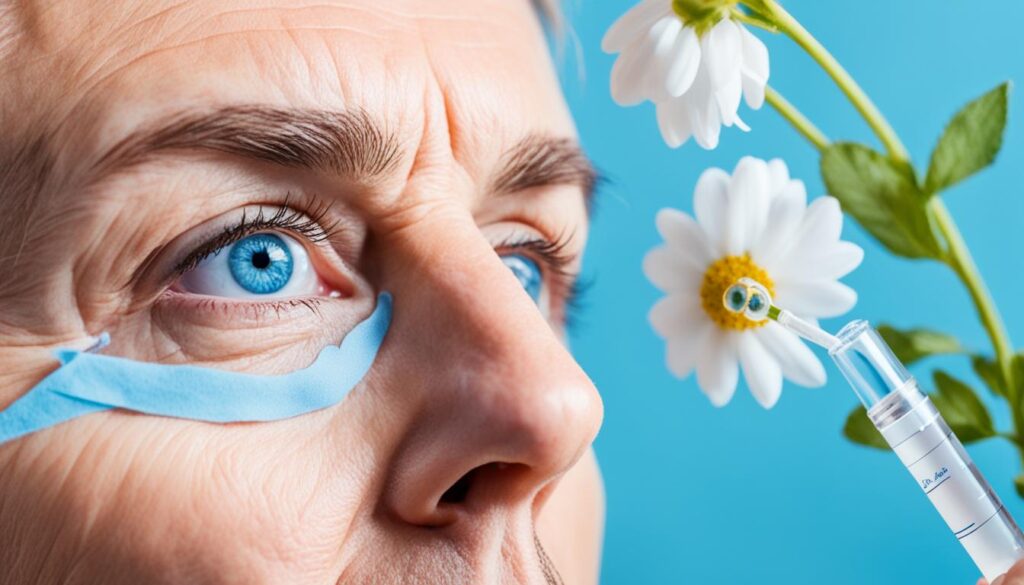
In severe cases of Bell’s palsy, it is essential to have regular monitoring by an eye doctor. They can assess the eye for any potential complications or changes in vision. This helps ensure prompt intervention if necessary and supports your overall recovery process.
| Actions | Benefits |
|---|---|
| Using lubricating eye drops | Prevents dryness and discomfort |
| Applying an eye ointment | Ensures overnight protection and reduction of dryness |
| Wearing glasses or goggles | Shields the eye from external factors and prevents irritation/injury |
| Using an eye patch during sleep | Keeps the eye closed and protected to prevent dryness and corneal abrasions |
By following these eye care measures, you can minimize the risk of complications and support your recovery journey in Bell’s palsy. Remember to consult with your healthcare provider for personalized advice and recommendations.
Home Remedies for Bell’s Palsy
Along with medical treatment, there are a few home remedies that can help ease the symptoms of Bell’s palsy. These remedies can provide additional relief and support your recovery.
Pain Relievers
If you are experiencing pain due to Bell’s palsy, over-the-counter pain relievers can help manage this discomfort. Medications such as aspirin or ibuprofen can provide temporary relief and alleviate the pain associated with the condition.
Physical Therapy Exercises
In addition to pain relief, physical therapy exercises can be beneficial in relaxing and exercising the facial muscles, which can prevent complications and aid in recovery. These exercises should be performed under the guidance of a physical therapist.

By incorporating these home remedies into your routine, you can supplement your medical treatment and improve your overall well-being during your Bell’s palsy recovery journey.
Alternative Medicine for Bell’s Palsy
While there is limited scientific evidence, some people with Bell’s palsy may find relief through alternative treatments. Alternative medicine approaches aim to stimulate nerves and muscles, manage symptoms, and improve facial symmetry. Here are three alternative treatments that are sometimes considered:
- Acupuncture: Acupuncture involves the placement of fine needles into specific points on the skin to stimulate nerves and muscles. This ancient practice may help improve blood flow and promote the body’s natural healing response.
- Biofeedback Training: Biofeedback training is a technique that teaches individuals to use their thoughts to control muscle movements. It can help improve muscle coordination and restore normal facial function.
- Botulinum Toxin Injections: Botulinum toxin injections, commonly known as Botox, can be used to manage symptoms of Bell’s palsy such as facial spasms and muscle imbalances. This treatment can help improve facial symmetry and reduce muscle contractions.
It’s important to note that the effectiveness of these alternative treatments may vary from person to person. Consulting with a qualified healthcare professional is crucial before considering any alternative treatment options.
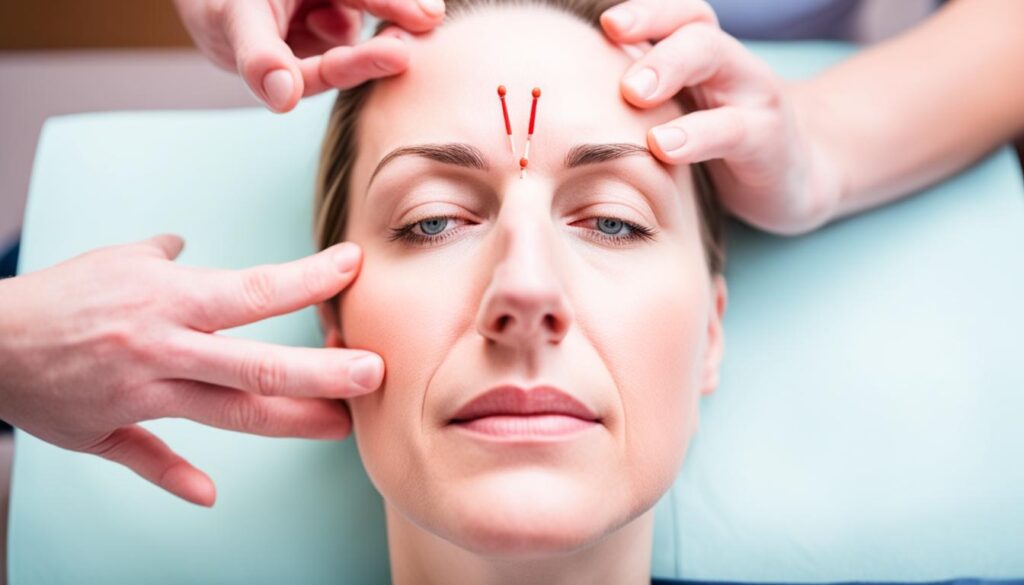
Comparative Analysis of Alternative Treatments for Bell’s Palsy
| Treatment Option | Method | Benefits | Limitations |
|---|---|---|---|
| Acupuncture | Placement of fine needles into specific points on the skin | – Stimulates nerves and muscles – May improve blood flow – Promotes natural healing response | – Limited scientific evidence – Individual response may vary |
| Biofeedback Training | Using thoughts to control muscle movements | – Improves muscle coordination – Restores normal facial function – Non-invasive approach | – Requires practice and commitment – Results may take time |
| Botulinum Toxin Injections | Injection of botulinum toxin into affected facial muscles | – Manages facial spasms and muscle imbalances – Improves facial symmetry – Can provide temporary relief | – Requires professional administration – Potential side effects – Effects may wear off over time |
Preparing for Your Bell’s Palsy Appointment
Preparing for your appointment with a healthcare provider is crucial to ensure that you have a productive session and all the necessary information is shared. Here are some steps to help you get ready:
- Document your symptoms: Make a detailed note of your Bell’s palsy symptoms, including any unrelated ones. This information can help your healthcare provider understand the full extent of your condition and provide appropriate care.
- Note major life changes or stressors: Write down any significant life changes or sources of stress that may be relevant to your condition. These factors can contribute to the development or exacerbation of Bell’s palsy.
- Compile a medication list: List all the medications you are currently taking, along with their dosages. Include any supplements or vitamins as well. This information is important for your healthcare provider to consider when developing your treatment plan.
- Consider bringing support: If possible, have a family member or friend accompany you to your appointment. Their presence can offer additional support and help you remember any important details discussed during the session.
- Prepare questions to ask: Jot down any questions or concerns you have about your condition, treatment options, or potential side effects. This will ensure that you address all your doubts and have a clearer understanding of your situation.
Example:
Here’s an example of how you can organize your medication list:
| Medication | Dosage |
|---|---|
| Prednisone | 10 mg once daily |
| Acyclovir | 400 mg three times a day |
| Vitamin B12 | 1000 mcg once daily |
Remember, proper preparation will help you make the most of your Bell’s palsy appointment and ensure that you receive the best possible care.

What to Expect During a Bell’s Palsy Appointment
When you visit your healthcare provider for a Bell’s palsy appointment, it is important to have an understanding of what to expect. During the appointment, your healthcare provider will ask you several questions to gather information about your symptoms and medical history.
Discussion about Symptoms and Onset
Your healthcare provider will inquire about the onset and severity of your Bell’s palsy symptoms. They will want to understand when you first noticed the facial paralysis and whether it developed gradually or suddenly.
Factors that Improve or Worsen Symptoms
You will be asked about any factors that may improve or worsen your Bell’s palsy symptoms. This can include activities, medications, or any specific triggers that seem to impact your facial paralysis.
Family History and Facial Paralysis
It is important to inform your healthcare provider about any family history of Bell’s palsy or facial paralysis. This information can help in understanding potential genetic or hereditary factors that may contribute to your condition.
Managing Facial Pain
If you experience facial pain along with Bell’s palsy, your healthcare provider may recommend certain methods to help manage the discomfort. These can include taking over-the-counter pain relievers and applying moist heat to the affected area.
Eye Care and Protection
Since Bell’s palsy can affect eye closure and cause dryness, proper care and protection are essential. Your healthcare provider may advise frequent blinking, using lubricating eye drops, and wearing glasses or goggles for eye protection.
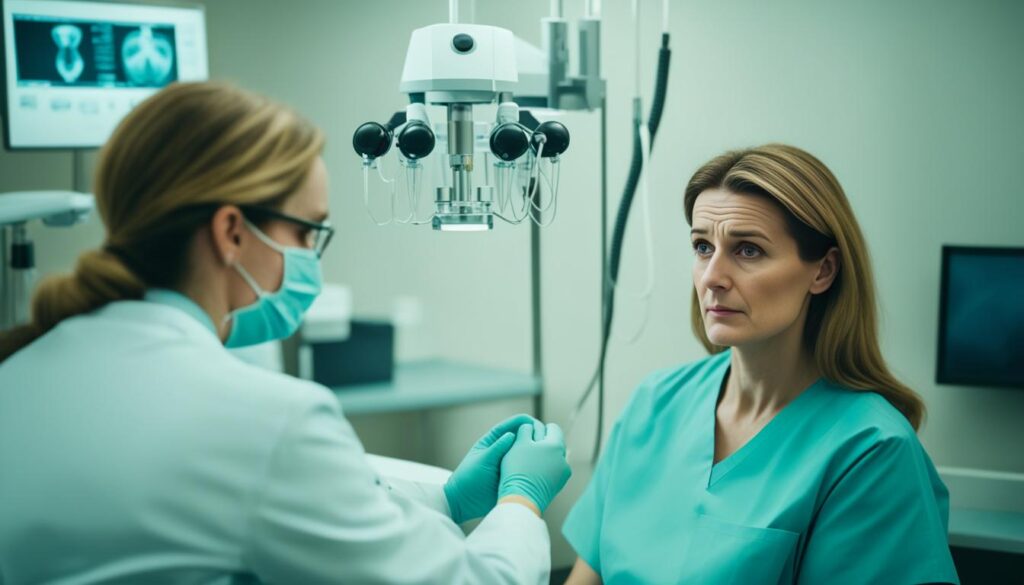
| Appointment Expectations | Facial Pain Management Tips |
|---|---|
| – Detailed discussion of symptoms and onset. – Inquiring about factors that improve or worsen symptoms. – Gathering information about family history of facial paralysis. – Addressing concerns and answering questions you may have. | – Taking over-the-counter pain relievers as recommended. – Applying moist heat to the affected area for pain relief. – Informing your healthcare provider about any facial pain experienced. – Following eye care and protection measures advised by your healthcare provider. |
By having a clear understanding of what to expect during your Bell’s palsy appointment, you can prepare the necessary information and questions to discuss with your healthcare provider. This will help ensure that your concerns are addressed and that you receive the appropriate guidance and treatment for your condition.
Conclusion
Bell’s palsy, a condition characterized by sudden facial paralysis, can be a daunting experience. However, the good news is that most individuals recover fully from Bell’s palsy, with or without treatment. While there is no one-size-fits-all approach to treatment, there are various options available to aid in recovery.
Medications such as corticosteroids, physical therapy, and protective eye care play a crucial role in the comprehensive treatment approach for Bell’s palsy. Corticosteroids help reduce inflammation and may be most effective when started early. Physical therapy exercises help prevent muscle atrophy and improve facial muscle function. It is also important to protect and care for the affected eye as Bell’s palsy can cause complications.
Alternative treatments, though not scientifically proven, may also be considered. These include acupuncture, biofeedback training, and botulinum toxin injections, which have shown some positive results in managing symptoms and promoting facial symmetry. However, it is essential to consult with a healthcare provider to determine the most suitable treatment approach based on individual circumstances.
Remember, with the right treatment and care, Bell’s palsy can be overcome. If you are experiencing symptoms of Bell’s palsy, seek medical attention promptly to receive the necessary support and guidance for your recovery journey.
FAQ
What are some effective treatment options for Bell’s Palsy?
Effective treatment options for Bell’s Palsy include medications, such as corticosteroids, physical therapy, and protective eye care. Surgery is rarely considered and may carry risks.
How is Bell’s Palsy diagnosed?
Bell’s Palsy is diagnosed through a physical examination of the face and assessing the movement of facial muscles. Healthcare providers may also recommend tests such as electromyography (EMG) and imaging scans to confirm the presence and severity of nerve damage and rule out other potential causes.
How can I protect and care for my eye if I have Bell’s Palsy?
It is important to protect and care for the eye by using lubricating eye drops throughout the day, applying an eye ointment at night, wearing glasses or goggles for protection, and using an eye patch during sleep. In severe cases, an eye doctor may need to monitor the eye for any potential issues.
Are there any home remedies for Bell’s Palsy?
Along with medical treatment, some home remedies for Bell’s Palsy include taking over-the-counter pain relievers like aspirin or ibuprofen for pain management and performing physical therapy exercises as advised by a physical therapist.
What are some alternative treatments for Bell’s Palsy?
While there is limited scientific evidence, some people with Bell’s Palsy may find relief through alternative treatments such as acupuncture, biofeedback training, and botulinum toxin injections.
How can I prepare for my Bell’s Palsy appointment?
To prepare for your Bell’s Palsy appointment, it is helpful to write down your symptoms, including unrelated ones, any major life changes or stressors, medications along with dosage, and any supplements or vitamins. Having a family member or friend accompany you can provide additional support, and preparing a list of questions to ask can help address any concerns.
What should I expect during my Bell’s Palsy appointment?
During your Bell’s Palsy appointment, the healthcare provider may ask about the onset and severity of your symptoms, factors that improve or worsen symptoms, and any family history of Bell’s Palsy or facial paralysis. If you experience facial pain, taking over-the-counter pain relievers and applying moist heat can provide some relief. Proper care for the eye, including frequent blinking and lubricating eye drops, is also important.
What are the most comprehensive treatment options for Bell’s Palsy?
While most people recover fully with or without treatment, Bell’s Palsy treatment options include medications, physical therapy, protective eye care, and alternative treatments. It is important to consult with a healthcare provider to determine the most appropriate treatment approach for individual situations.
Source Links
About The Author

This article is medically reviewed by Dr. Chandril Chugh, Board-Certified Neurologist, providing expert insights and reliable health information.
Dr. Chandril Chugh is a U.S.-trained neurologist with over a decade of experience. Known for his compassionate care, he specializes in treating neurological conditions such as migraines, epilepsy, and Parkinson’s disease. Dr. Chugh is highly regarded for his patient-centered approach and dedication to providing personalized care.
→ Book a consultation to discover which remedies suit your needs best.




